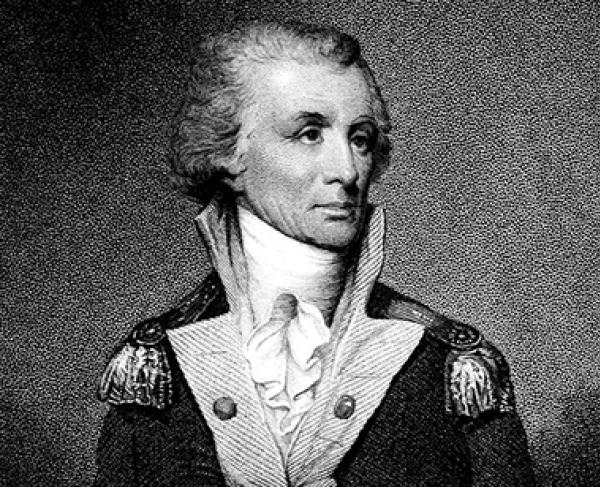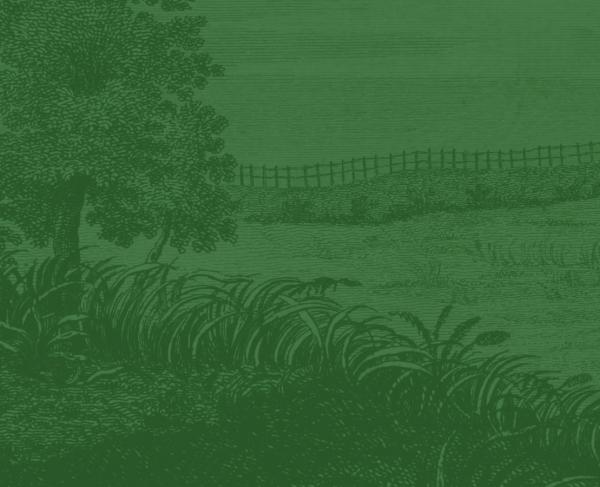
Rocky Mount
Fairfield County, South Carolina | Jul 30, 1780
The South Carolinians elected Colonel Thomas Sumter as their leader at a backwoods meeting in North Carolina and he immediately worked to raise the quantity and quality of his brigade of soldiers near Hill’s Iron Works at Clem’s Branch. The defeat of British Captain Christian Huck at Williamson’s Plantation by Colonel William Bratton on July 12 sparked the numbers of interested patriots to join Sumter’s militia. However, pioneer and settler esprit de corps in the backcountry could be fickle as many were committed to offensive campaigns but not to day-to-day soldiering. Following Captain Huck’s defeat, the Americans gathered intelligence on where the British were assembling their garrisons within the vicinity. Colonel Richard Winn received word that the British fort at Rocky Mount, high on a hill west of and overlooking the Catawba River, was defended by encircled abatis, with two log-framed houses and a larger clapboarded house. It provided an opportunity. Sumter chose his target.
On July 28, he moved to Major William Richardson Davie’s camp at the Waxhaw Presbyterian Meeting House. Davie agreed to conduct a concurrent, diversionary attack upon the British Hanging Rock outpost, 17 miles east of Rocky Mount. Sumter’s army marched on July 29 with double rations and a suitable ammunition supply to Rocky Mount. At sunset, Sumter’s 500 men crossed the Catawba River at Land’s Ford and marched south all night and invested the crest of Rocky Mount at sunrise. Lieutenant Colonel George Turnbull of the New York Volunteers commanded 150 of his men and 150 militia from Camden, bringing Rocky Mount’s defenders to 300.
Winn, leading Sumter’s advance, first ran off 100 Loyalists camped outside the fort, many leaving their horses and clothes. Losing the element of surprise, Sumter charged the fort. As the Americans poured on musket fire to the clapboard house, it became clear it was heavily reinforced on the interior. Colonel William Hill noted, “This was made under the impression that the enemy was in a large framed house; the walls of which were only thin clapboards, and we supposed that our balls have the desired effect by shooting through the wall…but the enemy…had placed small logs about a foot from the inside of the wall and rammed the cavity with clay…we injure them in no way, but by shooting in their port holes.”
With their riflemen providing cover, the patriots under Lieutenant Colonel Thomas Neal charged twice more towards the fortifications with the intent to cut through the abatis. What brief success came with breaking through the tangled obstructions came at a price as Neal, two militiamen, and their Catawba Indian guide were killed. Planning to continue his assault, Sumter sent a message off asking for Turnball’s surrender of the fort. The shooting ceased for an hour before Turnball rejected Sumter’s request by stating, “Duty and inclination induce me to defend this place to the last extremity.”
Seeing how close a large boulder lay in proximity to the fortifications, Colonel William Hill then volunteered for a decisive move. Hill, along with Sergeant Jemmy Johnson, would run the one hundred yards to the boulder, light their firebrands under cover of the rock, and hurl the brands onto the smallest structure’s roof, igniting it and hopefully producing the surrender they desired. They “armored” themselves in corded bundles of light pinewood split to cover the most vital parts of their bodies. As they raced forward, the garrison responded with bayonet sallies that drove them back before they could ignite their torches. Running back to the American lines, musket balls splintered their protective wood. Sumter ordered more riflemen forward to provide covering fire. On their second try, with more American rifles pointed at the fort, the two men were able to make it to the boulder, light their brands, and hurl them to the roof of the small cabin, setting it on fire. They quickly returned under cover fire as the garrison responded with an explosion of musketry. “Providence, so protected us both, that neither of us lost a drop of blood, altho’ locks of hair was cut from our heads and our garments riddled with balls,” reported Hill. But just as the operation seemed to be turning in the Americans’ favor, a late day thunderstorm showered the battleground, putting out the roof fire, and frustrating further attempts of igniting the remaining buildings. After eight hours and losing four soldiers with six wounded and two captured, Sumter called off the attack. The British lost 20 killed or wounded, including two officers.
As he retreated north to their encampment at Landsford along the Catawba River, Sumter’s men fell upon a small force of Loyalist reinforcements dispatched to Rocky Mount. In the quick skirmish, Sumter lost twenty soldiers, but claimed sixty of the Tory forces, a few of their horses and supplies, and sent the remaining partisans scattering from the area. Despite this, the assault on Rocky Mount had been a disappointing venture for Sumter’s first combat engagement after the fall of Charleston. Meanwhile, on the same date, Col. William Richardson Davie had devised a daring and deceitful plan to pose as Loyalists to attack 120 mounted Loyalist infantry camped within view of the 500-man garrison at Hanging Rock. Forty of Davie’s militiamen nonchalantly rode up to a nearby house, without suspicion because they dressed alike, and dismounted next to the Loyalist camp, then immediately opened fire. The panicked Loyalists rode to the other end of the house lane where they were surprised by Davie’s forty dragoons. Davie reported, the Loyalists “all rushed against the angle of the fence where they were surrounded by the dragoons who had entered the field and literally cut to pieces.” Davie lost only one man in this first battle at Hanging Rock and returned with 60 captured horses and one hundred muskets and rifles to Sumter. The second battle at Hanging Rock occurred just seven days later.
Today, the former site of the Rocky Mount garrison is unrecognizable as the hill shows no trace of the former buildings and trees have overgrown the grounds. The hill is located on the west bank of the Catawba River across from the Dearborn Dam in Fairfield County, South Carolina. Currently, there is no marker commemorating the site of the battle, but that should not belittle the importance of us knowing what took place on July 30, 1780, at Rocky Mount. Without the persistence of the American forces under Thomas Sumter, the targeted British outposts would have remained strongpoints to their continued operations of establishing supply routes that could choke off patriot support in South Carolina.
All battles of the Southern Theater 1780 - 1783 Campaign
Related Battles
500
300
12
20

